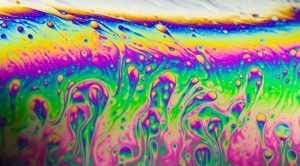Surfaces and Interfaces in soft condensed matter
W. Drenckhan, T. Charitat (ICS)
The aim of the course is to discuss the physical properties of complex soft matter interfaces, a condensed matter domain. The course will address the thermodynamics of flat and curved interfaces, high energy and low energy interfaces, thin films and membranes. Theoretical concepts and experimental techniques will be presented to study these systems at different spatial, temporal and energy scales. This course is for students who are interested both in the questions asked in physics, physico–chemistry and biophysics of complex systems (statistical physics, soft matter). These questions are also relevant in many applied fields (cosmetics, food processing, foams / emulsions …).
I–Thermodynamics of « flat » surfaces and interfaces
- Pure liquid interfaces: pure liquid interfaces: notion of Gibbs excess thermodynamic
quantities. Van der Waals interface model. - Monolayer at liquid interfaces: adsorption isotherms for soluble surfactants; Gibbs
and Langmuir isotherms. Area per molecule. - Phase transitions in insoluble surfactant layers.
II–High Energy Interfaces
- Curved surface (recollections of geometry): average and Gaussian curvatures,
Gauss–Bonnet theorem, thick surface (geometry), Monge approximation (quasi–plane
surface)… - High–energy interfaces: minimal surfaces, consequences of interfacial energy
(Laplace’s law, elasticity of bubbles / drops, structure and kinetic stability of foams /
emulsions). - Consequences: experimental techniques for interfacial tension characterization;
- Spontaneous emulsification (de Gennes model), towards low energy interfaces.
III– Low Energy Interfaces – Microemulsion–Membranes
- Low energy interfaces: to ultra–low interfacial voltages; energy; experimental
realization, water–oil interfaces; - Consequences of ultra–low tensions: Helfrich Hamiltonian: vesicle formations;
applications to vesicles, lamellar phases and su pported membranes. - Interactions: van der Waals, electrostatic, hydrophobic, depletion …
IV– Thermal fluctuations
- Fluctuations of a simple interface: capillary length ….
- Effect of fluctuations: Renormalization of elastic constants;
- Measurement of fluctuation spectra.
More here